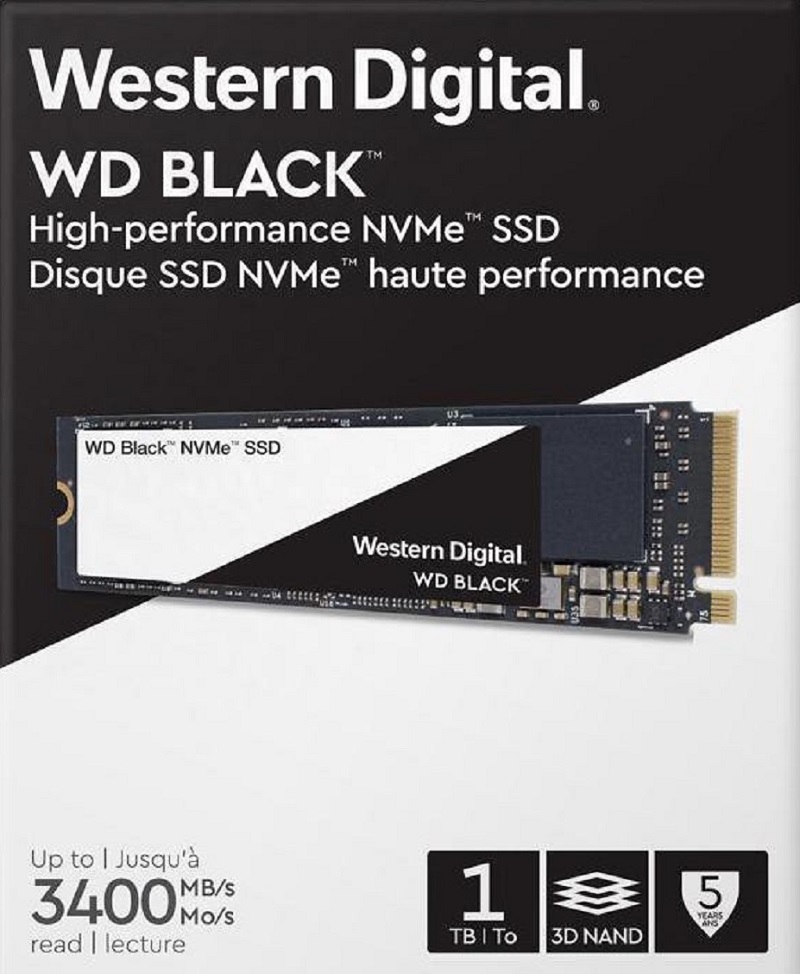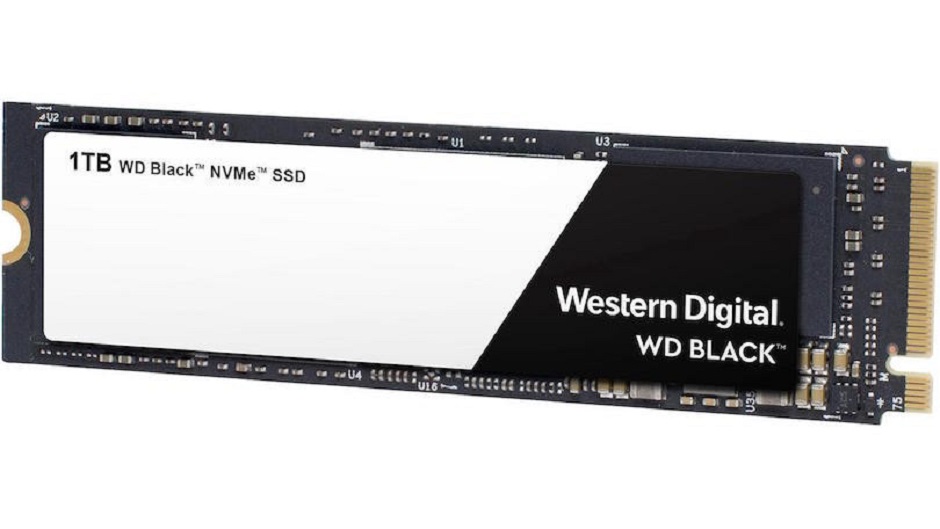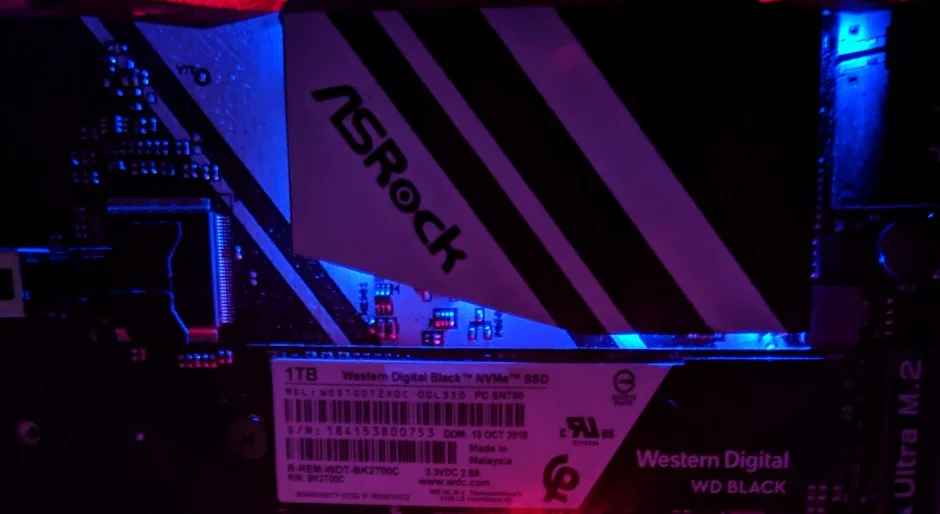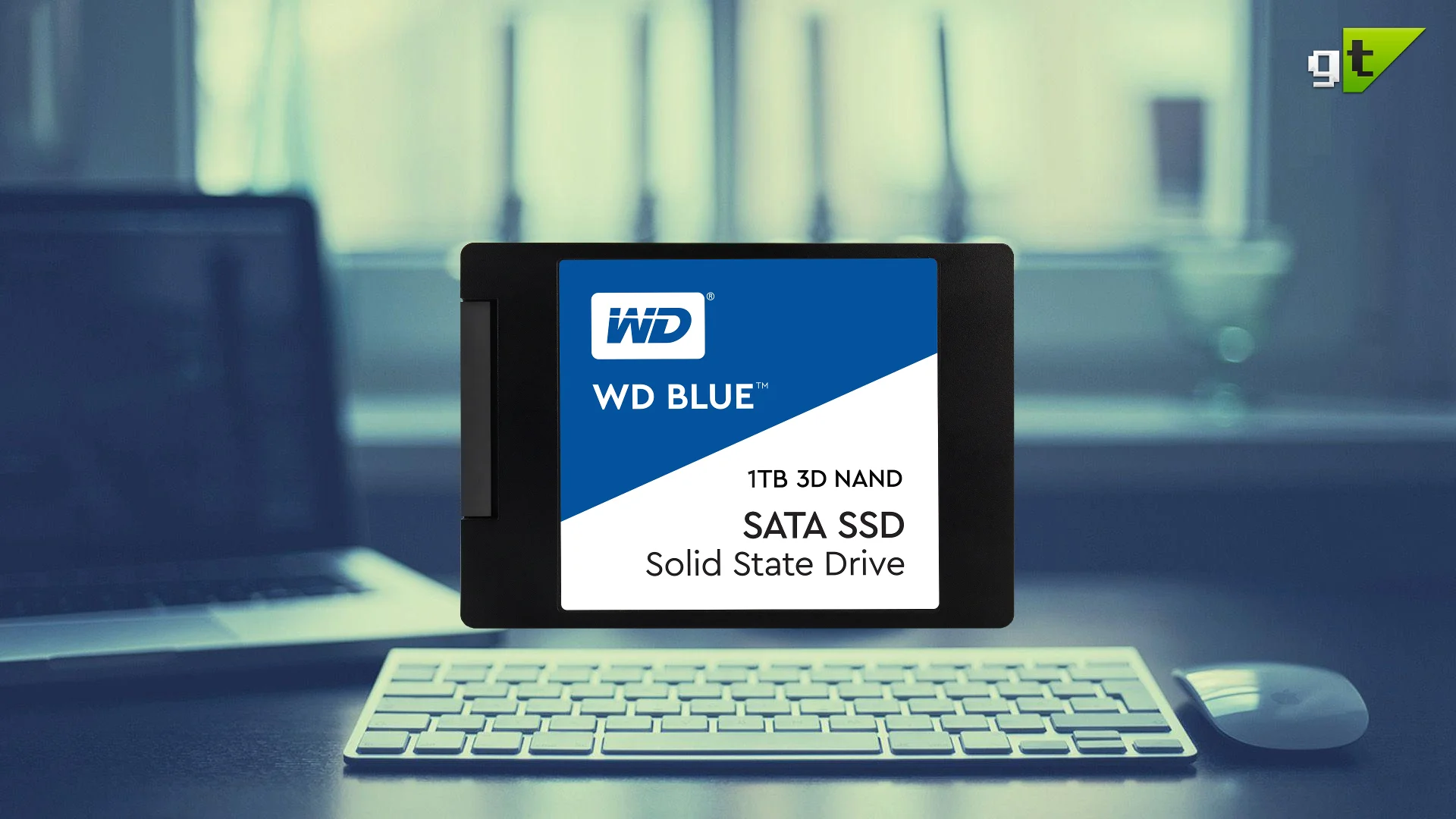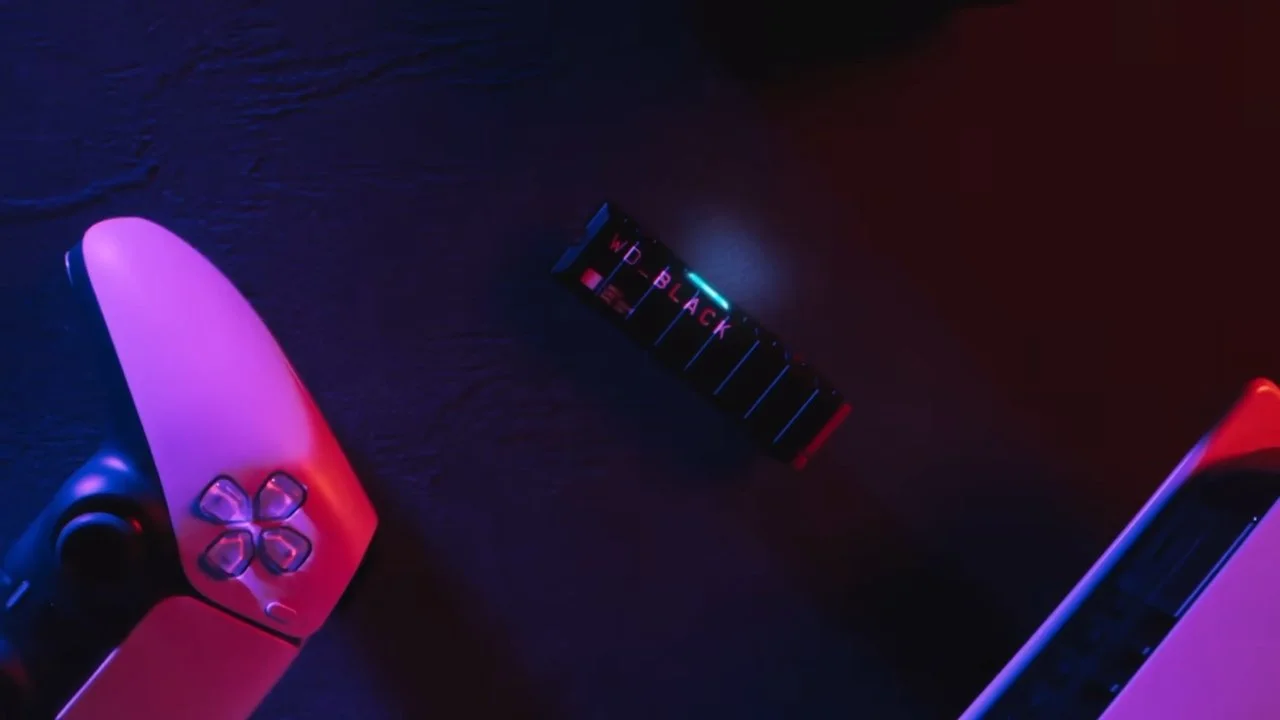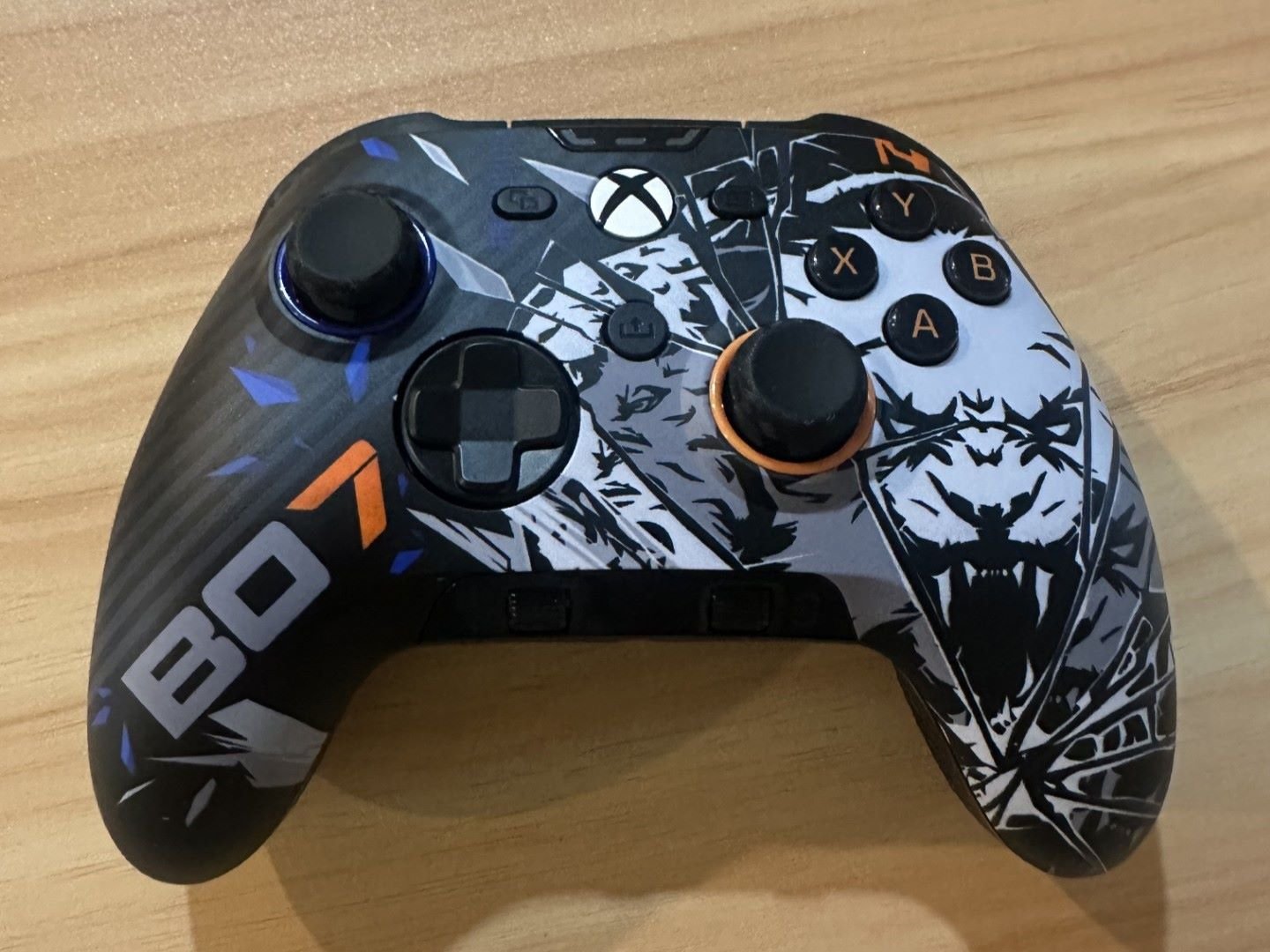For over 30 years Western Digital has been synonymous with computer storage. Over that time Western Digital has built a reputation for having the industry’s best drives. Western Digital drives have been so good that in my 20 years of I.T. work I can’t think of a time I wouldn’t recommend them. Although, recent years have seen a massive shift in the storage industry with Samsung having taken top spot in the SSD market and recommendations. But now Western Digital is ready to retake that crown with their new WD Black 1TB NVMe SSD which utilizes a new in-house storage controller to achieve amazing performance!
What’s In The Box
When you first pick up the WD Black there are a few things that stand out. First: the awesome contrast between black and white in use on the box; well done marketing team. Second is the advertised read speed of up to 3400 MB/s, a claim we will test momentarily. And finally, the details about capacity, NAND type, and 5 year warranty info. Opening the box gives us our first look at the WD Black NVMe SSD in its plastic housing and a paper info packet.
Aesthetics
The WD Black NVMe SSD circuit board is black and a label covers the NAND chips resulting in a nice looking product. The contrasting black and white of the circuit board and label are, as previously mentioned, pleasing to me and let the WD Black NVMe SSD look good alongside almost any motherboard.
Specs
The WD Black NVMe SSD utilizes the M.2 2280 standard and functions on the PCIe 3.0 X4 bus allowing for higher speeds than are capable with SATA drives. Utilizing a new in-house storage controller paired with the 64 layer Sandisk TLC NAND chips has maximized performance. To further increase speed is the use of the NVMe (non-volatile memory express) protocol. NVMe allows the new WD Black NVMe SSD to have lower latency and higher IOPS (input/output operations per second) all while consuming less power than previous models.
Western Digital advertises the speed of the WD Black NVMe SSD at up to 3400 MB/s sequential read and 2800 MB/s sequential write. Random reads are also advertised at hitting 500,000 IOPS and random writes hitting 400,000 IOPS. Running synthetic benchmarks such as AS SSD Benchmark has confirmed these numbers to within a couple of megabytes. This makes the WD Black NVMe SSD faster than, or on par with, its closest priced competition, the 960 Evo from Samsung.
Real-World Performance
Rather than spend more time on synthetic benchmarks that confirm what we have already been told, let us instead look at how the WD Black NVMe SSD holds up to real-world usage. For those of you who don’t know, GameTyrant runs a gaming center in North Salt Lake City, Utah. Our gaming center is home to 30 PC’s that I have recently converted over to the WD Black NVMe SSD from a 2017 SATA model WD Blue SSD. Cloning the drives went off without a hitch and I was actually taken aback by the results. Upon booting into windows, a gaming center specific application called GG Leap begins to load. Since GG Leap and Windows try to load alongside each other, the time it takes for the PC to reach a usable state took on average ~2 minutes using the WD Blue SSD’s. With the new WD Black NVMe SSD’s, boot times of GG Leap and Windows were dropped significantly to ~30 - 45 seconds. The responsiveness of GG Leap in usage has also increased with less hitches happening on screen transitions.
With how well the WD Black NVMe SSD worked on the PCs at the gaming center, I couldn’t wait to try it out on my home test rig. Since I saw how quick and easy cloning a drive to the WD Black NVMe SSD went at the gaming center, I decided to do a fresh install of Windows 10 to see how long the whole process would take. Using a USB 3.0 thumb drive as the install media the whole installation took ~10:40. After the installation completed I wiped the drive and set it up as a secondary drive to use in my normal Windows installation. I began further testing by editing together 4K video footage in Adobe Premiere. My normal editing drive is the SATA WD Blue SSD and when I do 4K footage there are moments of loading when quickly seeking through the footage. Thankfully this is exactly the task the WD Black NVMe SSD is designed for and those loads are no longer present!
Now it feels only right to discuss the gaming performance when using the WD Black NVMe SSD, this is a gaming site after all. I would like to also point out here that most games are not designed with NVMe in mind so they don’t really take advantage of the higher speeds over a traditional SATA SSD. But for the purposes of this review I chose 3 games to run basic loading tests on: X4: Foundations, PUBG and Rise of the Tomb Raider. Loading is timed 5 times between each of the test drives with the average of these times being the final result.
As you can see from the results above, both of the SSD’s predictably outperform the traditional mechanical HDD. You might have also noticed that the WD Black NVMe SSD performs about the same as the WD Blue SSD. This is, once again, not an unexpected result with games not yet built to take advantage of the increased speed of NVMe. One thing I would like to point out that doesn’t show in the numbers, however, is the in-game streaming of assets (not to be confused with FPS) looks much smoother on the WD Black NVMe SSD over the other drives. It is also worth noting that PUBG seems to be bottlenecked in its loading by server side communication.
Verdict
The WD Black NVMe SSD is a fantastic drive whose new in-house storage controller really delivers, while also beating its closest competition! With this being just the first generation of Western Digital’s new storage controller, I can’t wait to see how speeds can be optimized with later revisions. Even though the price might command a premium, it is more than worth it for any other gaming/data centers or 4K video editors!
Grab your WD Black NVMe SSD here!

